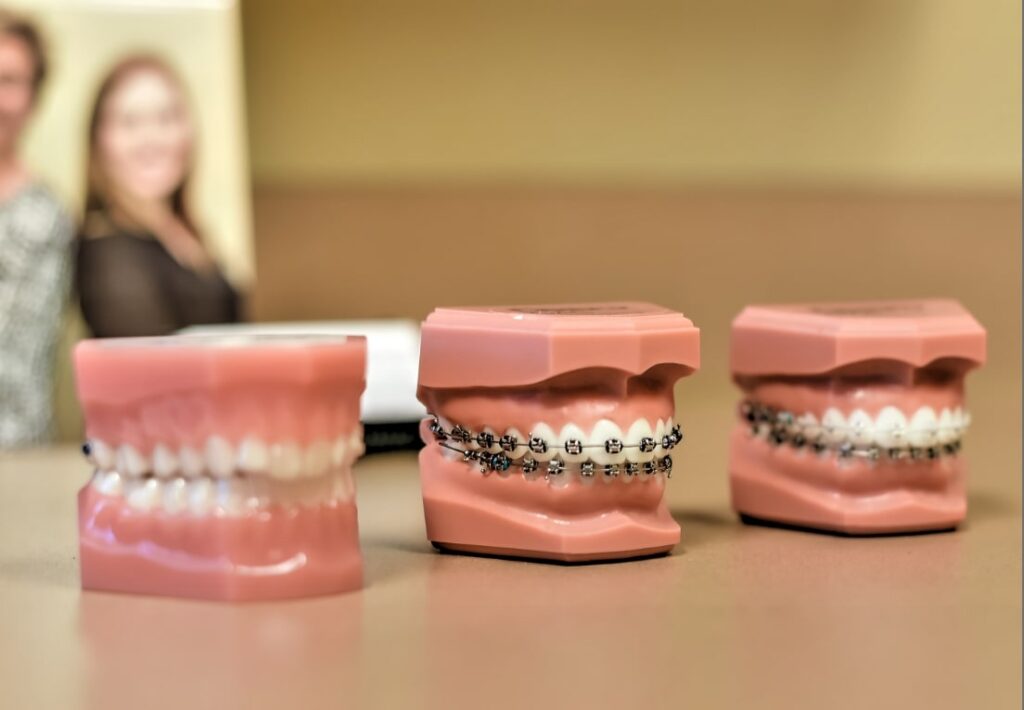Top Tips for Choosing the very best Cumming Orthodontist for Braces and Aligners
Top Tips for Choosing the very best Cumming Orthodontist for Braces and Aligners
Blog Article
Comprehensive Guide to Orthodontics Treatments for Correcting Dental Misalignments
In the world of orthodontics, the journey to accomplishing a flawlessly straightened smile involves a myriad of procedures customized to deal with dental misalignments. From standard dental braces to invisible aligners and even surgical choices, the area of orthodontics offers a variety of options to resolve differing degrees of dental irregularities. Comprehending the ins and outs of each treatment, including their devices, benefits, and prospective disadvantages, is crucial in making informed decisions about one's orthodontic therapy. As we browse with the thorough overview to orthodontic treatments for dealing with oral imbalances, the intricate details of each method will unfold, shedding light on the course towards a unified and useful oral placement.
Orthodontic Procedures Review

Along with clear aligners and traditional dental braces, orthodontists may also suggest other treatments like headwear, palatal expanders, or retainers to deal with details positioning issues (orthodontist). These treatments are tailored to every patient's one-of-a-kind requirements and might involve a mix of treatments to accomplish the preferred outcomes. Routine changes and monitoring are critical parts of orthodontic therapy to make sure progress is on track and to make any type of needed alterations along the means. By undertaking orthodontic treatments, individuals can not just achieve a straighter smile yet additionally improve their general dental wellness and feature.
Typical Dental Braces: Just How They Function
When thinking about orthodontic treatments for oral misalignments, traditional dental braces stick out as a tried and true approach for dealing with teeth positioning. Traditional dental braces include braces, cables, and bands that interact to apply continual pressure on the teeth, gradually relocating them into the preferred alignment. The braces are affixed to the teeth making use of a special adhesive, and the wires are threaded with the brackets. By changing the tension of the cables, orthodontists can control the direction and pressure applied to each tooth, leading them into correct positioning with time.
As stress is used to the teeth with the dental braces, the bone bordering the teeth is improved to sustain the brand-new tooth placements. People will certainly require normal changes at the orthodontist's workplace to make certain the dental braces proceed to use the proper stress for reliable teeth activity.
Unseen Aligners: Pros and Disadvantages
These clear, custom-made trays are basically undetectable when worn, making them an enticing choice for individuals looking for a much more aesthetically pleasing orthodontic therapy. Clients can get rid of the aligners before consuming or brushing their teeth, reducing the danger of food getting stuck in the home appliance and streamlining the cleansing procedure.

Surgical Orthodontic Options
Surgical interventions in orthodontics present practical choices for attending to complicated oral imbalances that may not be successfully solved via standard orthodontic therapies. While typical dental braces and unseen aligners can deal with several orthodontic concerns, particular instances need surgical intervention to accomplish ideal Web Site results. Surgical orthodontic options are typically recommended for extreme malocclusions, substantial jaw disparities, and instances where the underlying bone framework requires alteration to accomplish appropriate alignment.
One common medical orthodontic treatment is orthognathic surgical treatment, which includes repositioning the jaws to fix functional issues such as difficulty eating or speaking. This surgical treatment is often executed in collaboration with an orthodontist that assists align the teeth before and after the treatment. Surgical orthodontics may also entail procedures to reveal affected teeth, remove excess periodontal tissue, or improve the jawbone to create an extra unified face profile.
Before taking into consideration surgical orthodontic options, clients go through a detailed assessment to determine the requirement and potential advantages of such interventions. braces. While surgical procedure may appear complicated, it can considerably boost both the function and appearances of the smile in cases where standard orthodontic treatments fail
Retainers and Post-Treatment Treatment

Failing to comply with post-treatment care directions can result in relapse, where the teeth slowly move back towards their initial settings. Constant retainer wear, great oral hygiene, and regular dental exams are important for maintaining the results attained via orthodontic surgical procedure and making certain the lasting stability of the fixed dental alignment.
Verdict
To conclude, orthodontic treatments use various options for correcting oral imbalances. Conventional braces make use of steel brackets and wires to change teeth right into proper alignment. Unseen aligners supply a more discreet option however might not be ideal for all situations. Surgical orthodontic options are readily available for much more severe imbalances. Retainers are frequently used post-treatment to keep the new placement. Generally, orthodontic procedures can properly enhance oral health and wellness and aesthetic look.
As we navigate with the comprehensive overview to orthodontic treatments for fixing oral misalignments, the elaborate information of each method will unravel, shedding light on the course toward a functional and unified oral alignment. - aligners
One of the most usual orthodontic therapies is the use of braces, which are composed of steel brackets and wires that apply mild stress to gradually shift teeth into the wanted placement.When considering orthodontic treatments for oral imbalances, typical braces stand out as a time-tested technique for remedying teeth placing. Additionally, unnoticeable aligners may not be appropriate for complicated orthodontic concerns that call for even more substantial teeth movement, as they are generally suggested for moderate to moderate situations. Retainers are tailor-made orthodontic tools made to hold teeth in their dealt with placements after the conclusion of orthodontic therapy.
Report this page